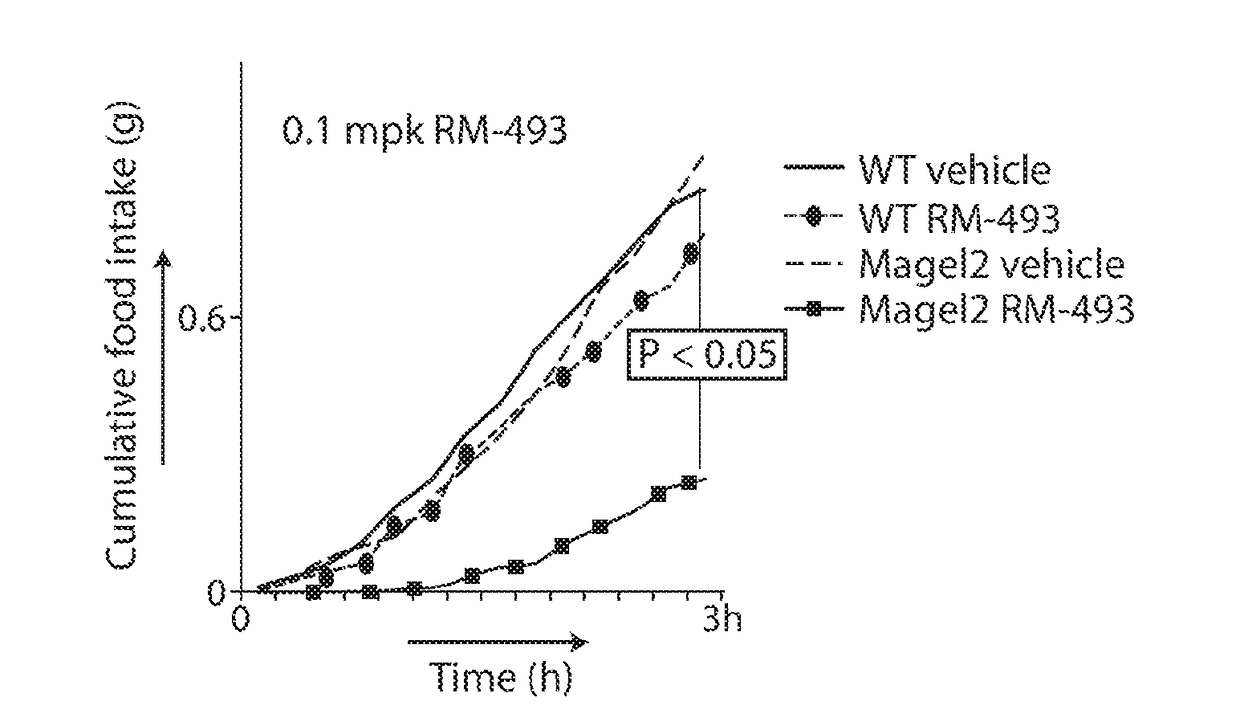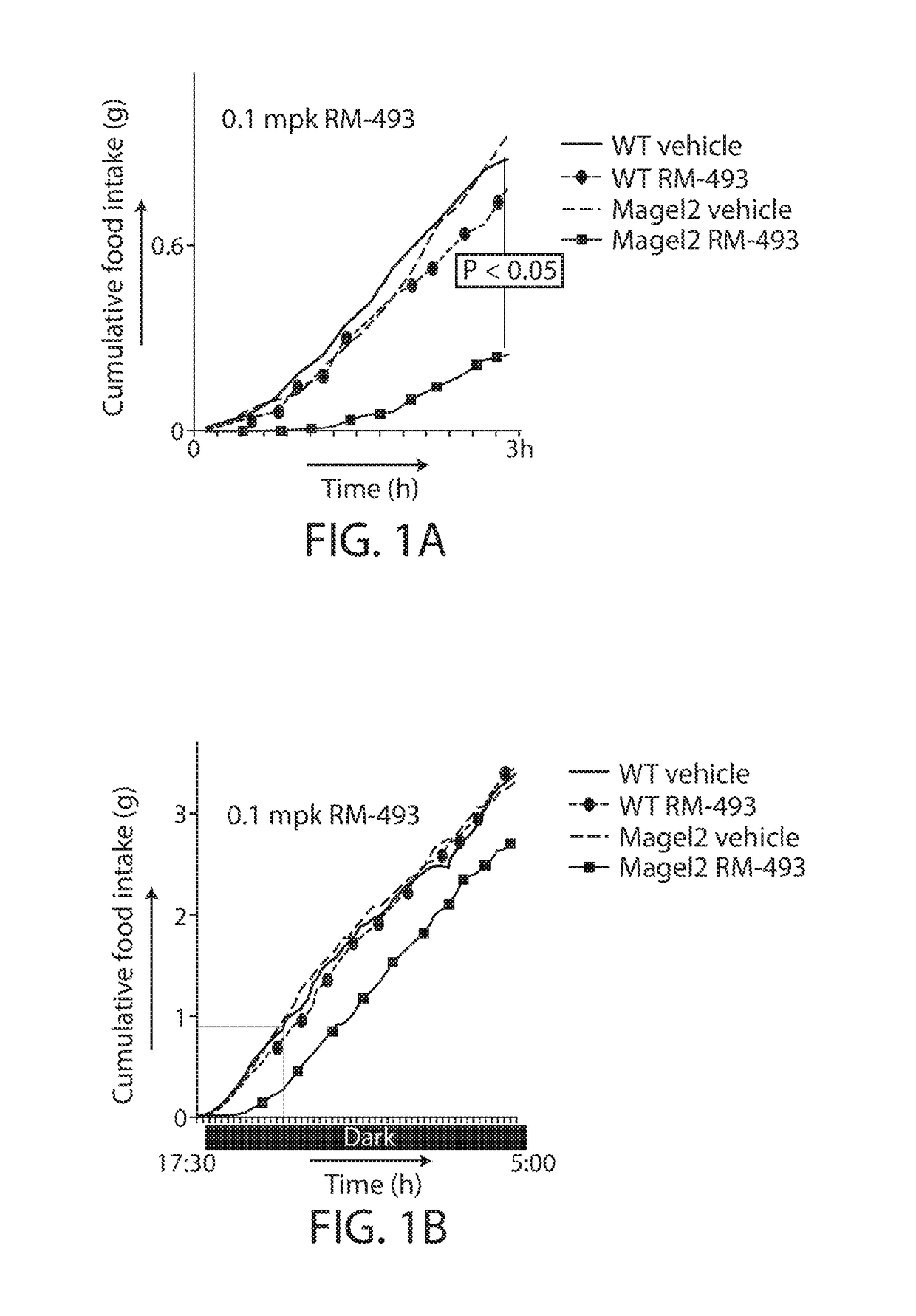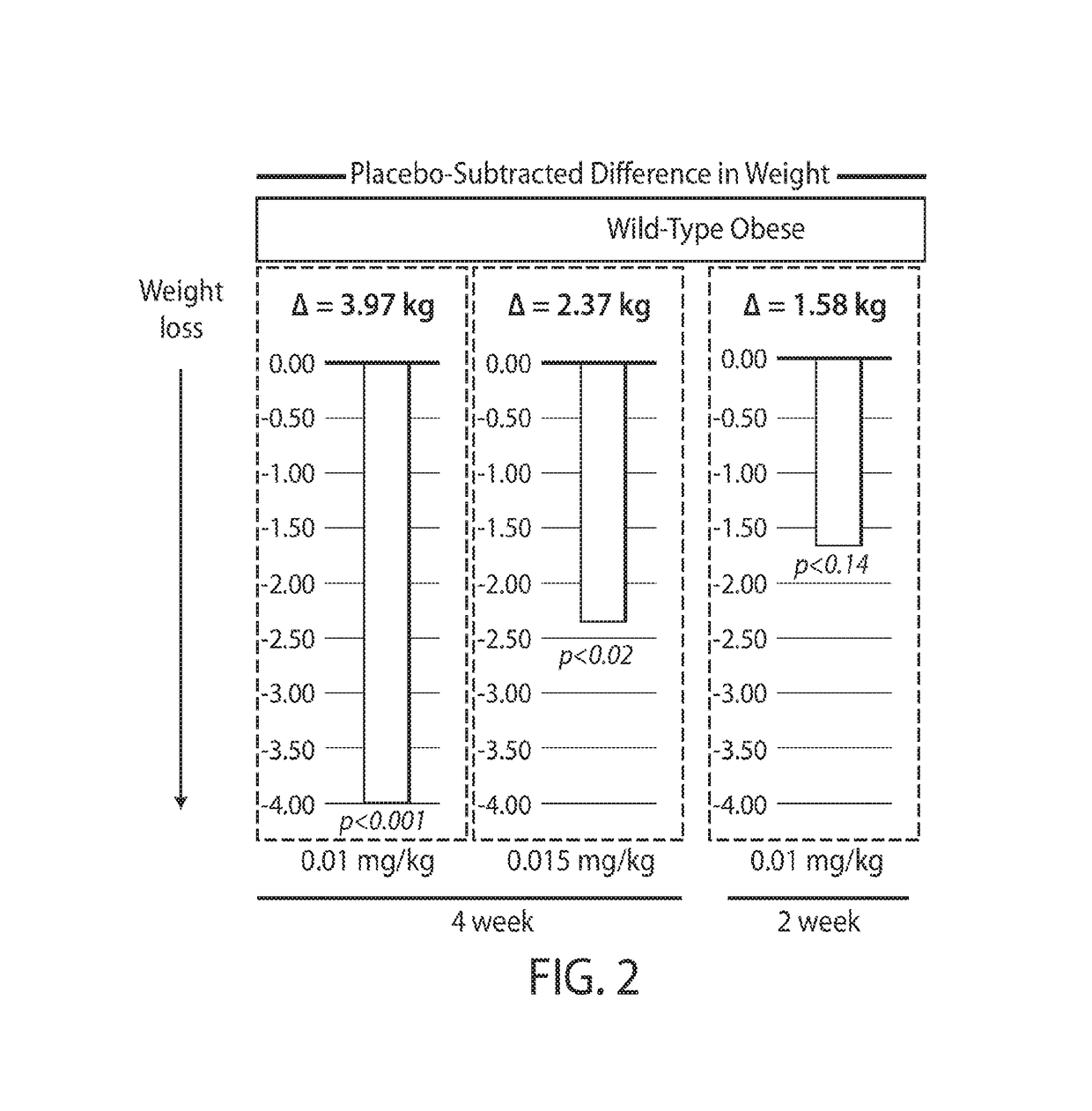Method of treating melanocortin-4 receptor pathway-associated disorders
- Summary
- Abstract
- Description
- Claims
- Application Information
AI Technical Summary
Benefits of technology
Problems solved by technology
Method used
Image
Examples
example 1
with a Melanocortin-4 Receptor (MC4R) Agonist in a POMC Deficient Patient with Severe Obesity and Hyperphagia
[1063]Patients with POMC gene defects, such as POMC loss of function mutations, suffer from severe early onset obesity, hyperphagia, red hair, adrenal insufficiency, and ACTH deficiency. It is believed that the early onset obesity and hyperphagia is caused by a deficiency of POMC-derived peptides, such as MSH and ACTH, which are ligands to melanocortin receptors. MSH, a cleavage product of POMC, is the ligand of the hypothalamic MC4R, which is important for regulating feeding behavior and energy homeostasis. There is a need for a targeted replacement therapy for patients with genetic defects of the leptin-melanocortin pathway, such as patients with POMC loss of function mutations.
[1064]This example describes a study in which an adult POMC deficient patient was administered the MC4R agonist, setmelanotide (also called RM-493), having the sequence, Ac-Arg-c(Cys-D-Ala-His-D-Phe-...
example 2
ortin 4 Receptor (MC4R) Agonist is Effective in a Mouse Model (Magel2-Null) of Prader-Willi Syndrome (PWS)
[1086]PWS is a contiguous gene disorder resulting from the loss of expression of several paternally inherited genes in a ˜2 Mb region on chromosome 15 (15q11.2-13), known as the PWS region. The maternal genes at this locus are normally inactive. See, e.g., Elena et al. J of Obesity (2012). The PWS region includes several protein coding genes, along with DNA regions that generate long noncoding RNAs, numerous small nucleolar RNA (snoRNAs), and antisense transcripts. The inactivation of this 2 Mb region, which normally expresses several gene products, brings about the PWS symptoms. Symptoms associated with PWS are described herein.
[1087]Deficiency in the function of the MAGEL2 gene, located in the 2 Mb PWS locus, is likely causative for a number of the signs and symptoms in PWS patients. Magel2-null mice recapitulate many aspects of the PWS phenotype (Bischof et. al., Hum Mol Gen,...
example 3
ist Effect on Wild-Type Obese Patients
[1093]The effect of MC4R agonist setmelanotide on wild-type obese human patients was assessed. The patients were treated with placebo or setmelanotide twice daily (BID) at 0.01 mg / kg or 0.015 mg / kg. There were 9 patients in each treatment group (6 with setmelanotide and 3 with placebo).
[1094]The amount of weight loss was determined after 2 weeks or after 4 weeks of treatment. FIG. 2 shows the placebo-subtracted differences in weight of the wild-type obese patients after administration with setmelanotide at various doses after 2 or 4 weeks. The weight loss among the wild-type obese patients was about 0.6 to about 0.9 kg per week.
PUM
| Property | Measurement | Unit |
|---|---|---|
| Weight | aaaaa | aaaaa |
| Weight | aaaaa | aaaaa |
| Weight | aaaaa | aaaaa |
Abstract
Description
Claims
Application Information
 Login to View More
Login to View More - R&D
- Intellectual Property
- Life Sciences
- Materials
- Tech Scout
- Unparalleled Data Quality
- Higher Quality Content
- 60% Fewer Hallucinations
Browse by: Latest US Patents, China's latest patents, Technical Efficacy Thesaurus, Application Domain, Technology Topic, Popular Technical Reports.
© 2025 PatSnap. All rights reserved.Legal|Privacy policy|Modern Slavery Act Transparency Statement|Sitemap|About US| Contact US: help@patsnap.com



